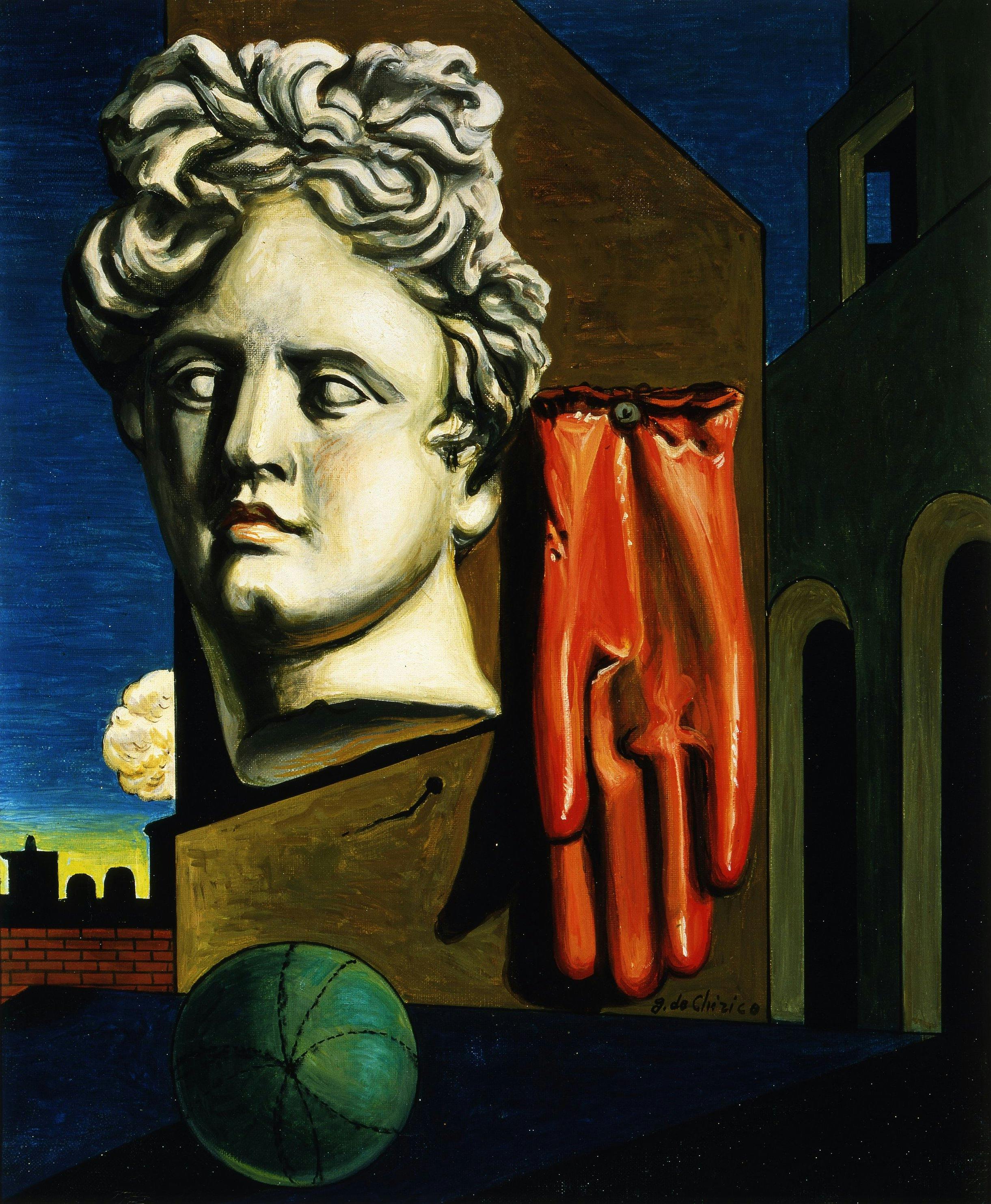Metaphysical composition
Giorgio De Chirico (Volos 1888 - Rome 1978)
bottom right “De Chirico”
On the back of the canvas, an authentication by De Chirico reads: "this metaphysical painting of the silent life of a head of Apollo with a red rubber glove is an authentic work executed and signed by me". The painting, probably executed in the 1950s, is a faithful replica of the 1914 work Canto d'amore (Love Song ), in the collection of the Museum of Modern Art in New York, and is a significant example of one of De Chirico's most famous and discussed operations, namely the systematic reproduction of his most famous paintings, particularly those from his metaphysical and surrealist period, with the intention of eliminating the conceptual distinction between true and false, between original and copy, in order to completely subvert the possibility of recognising and ordering his works in a chronological order.
Although distinguishable from the 1914 painting by minor variations (the outline of the locomotive and the colour of the sky in the background on the left, the dotted lines on the ball in the foreground, the head in a slightly more frontal pose), Metaphysical Composition conveys a strong sense of disorientation caused by the juxtaposition of objects abstracted from their original semantic context and offered up for multiple interpretations by the viewer. The quotation from Antiquity (the head is that of the Apollo of the Belvedere) next to a completely modern object, is placed in an impossible and voicelessly immobile architecture, in contrast to the ball, in precarious equilibrium. The interpretation of the work therefore remains open to different and even antithetical meanings: Apollo, god of all the arts and protector of Delphi, is the source of life but also of death; the glove, for Apollinaire, is a reference to obstetrics and is a metaphysical object par excellence, the emblem of the birth of a new art. The solidity of the statue is contrasted with the plastic object that has collapsed: both are simulacra, empty shells of a lost (or yet to be found) identity.
The painting was donated to the Gallery of Modern Art in Palazzo Pitti in 1964 by Leone Ambron.
